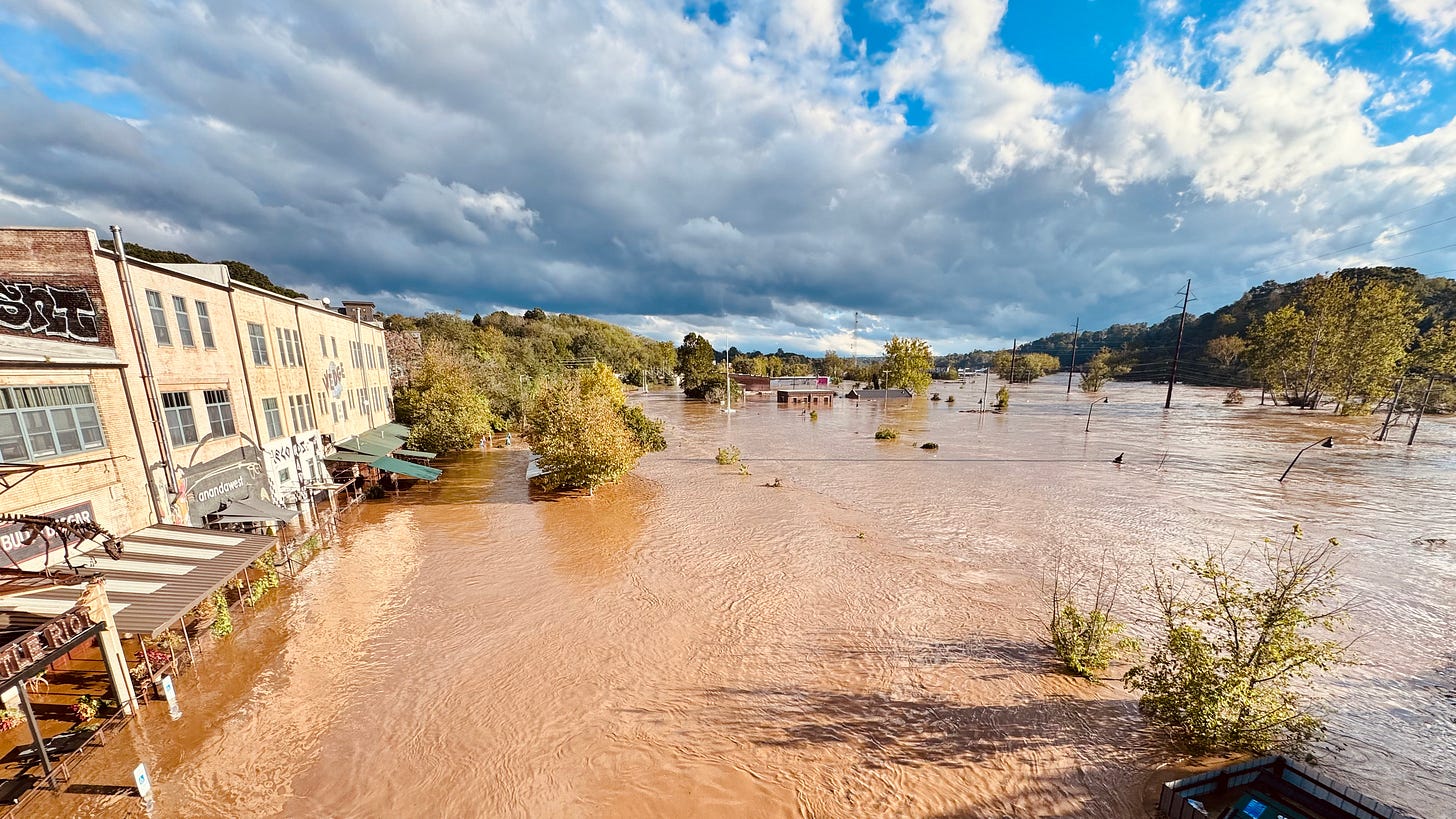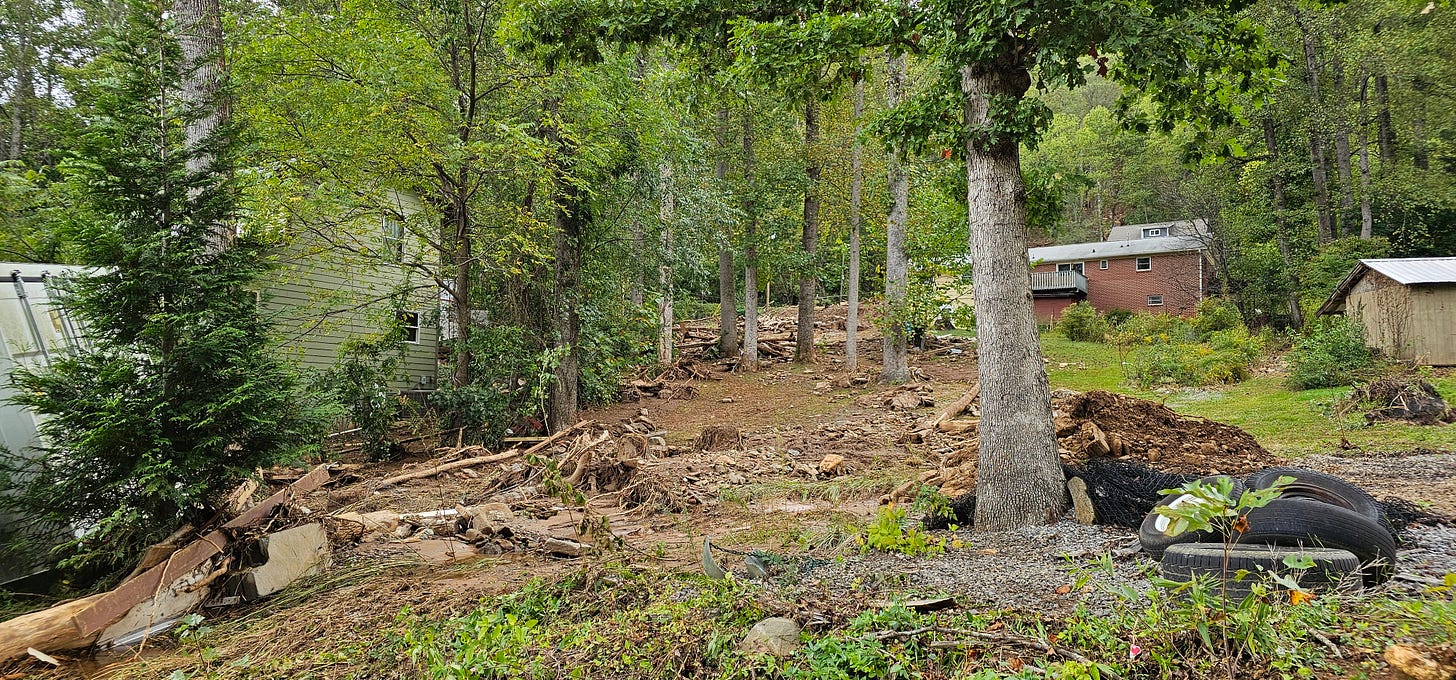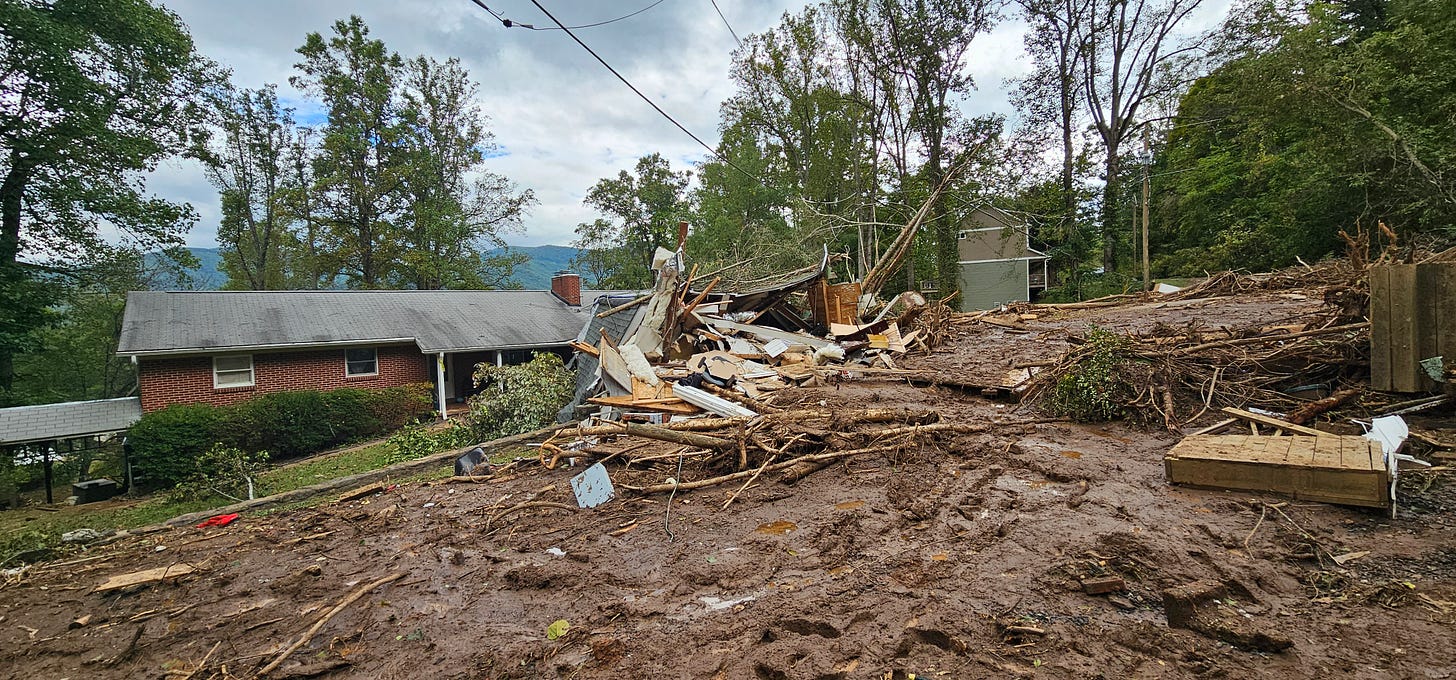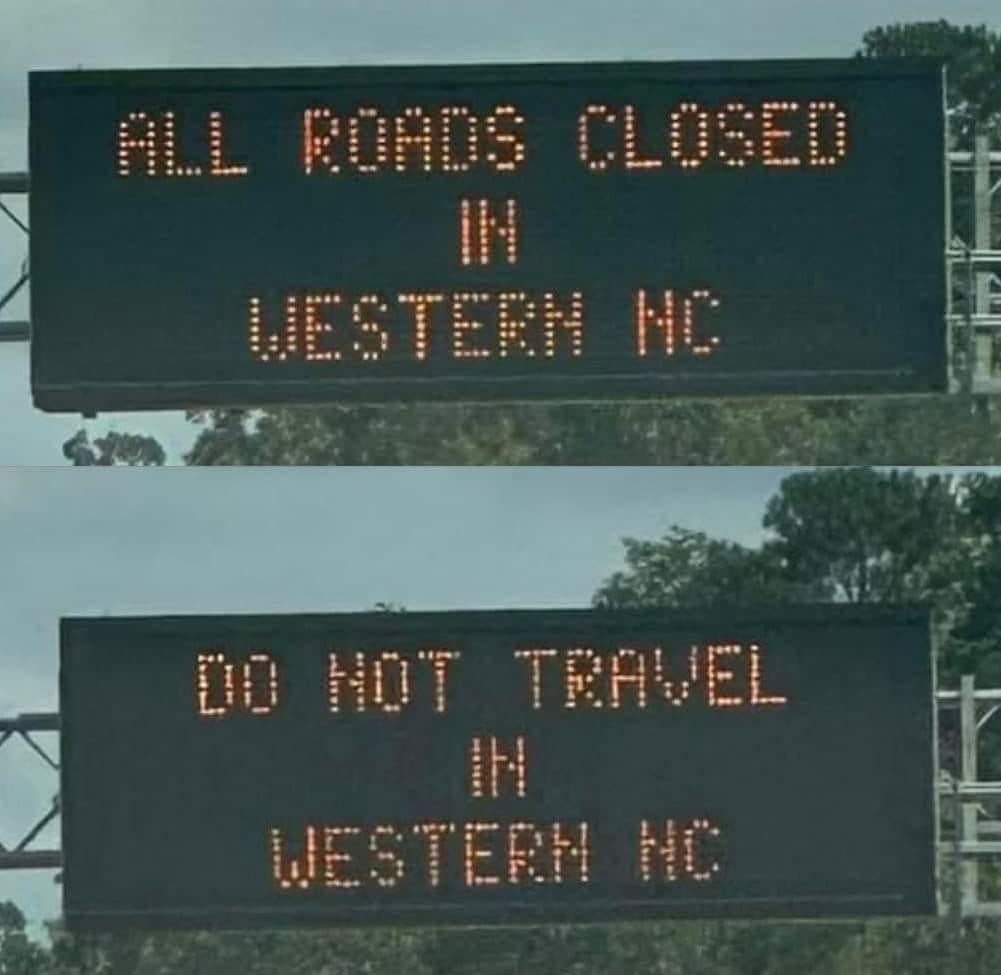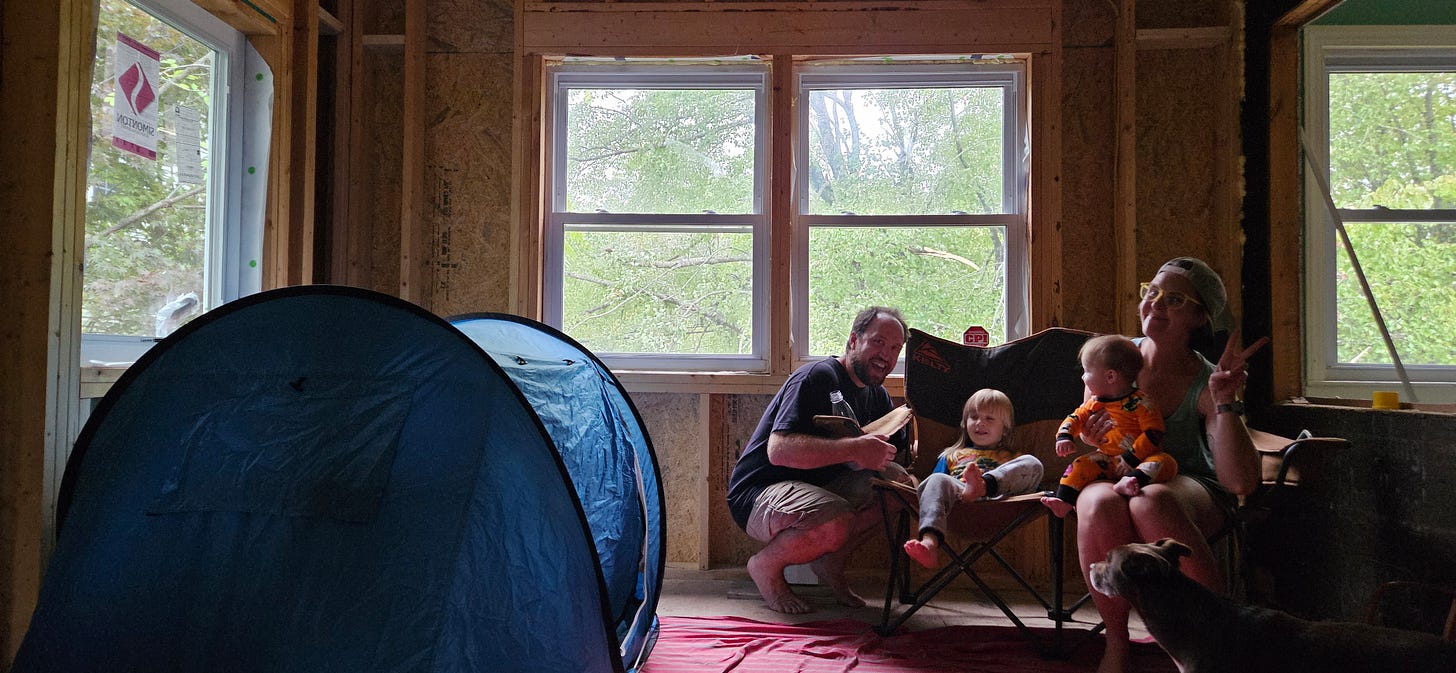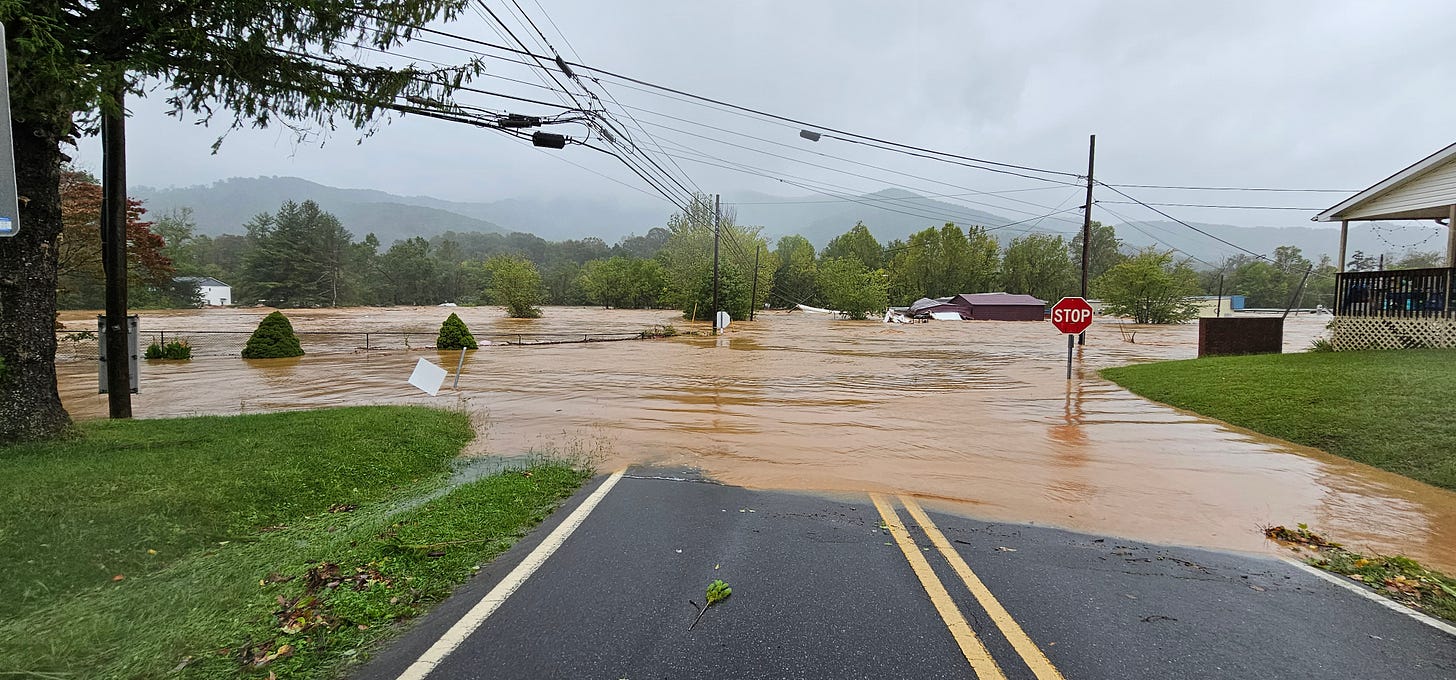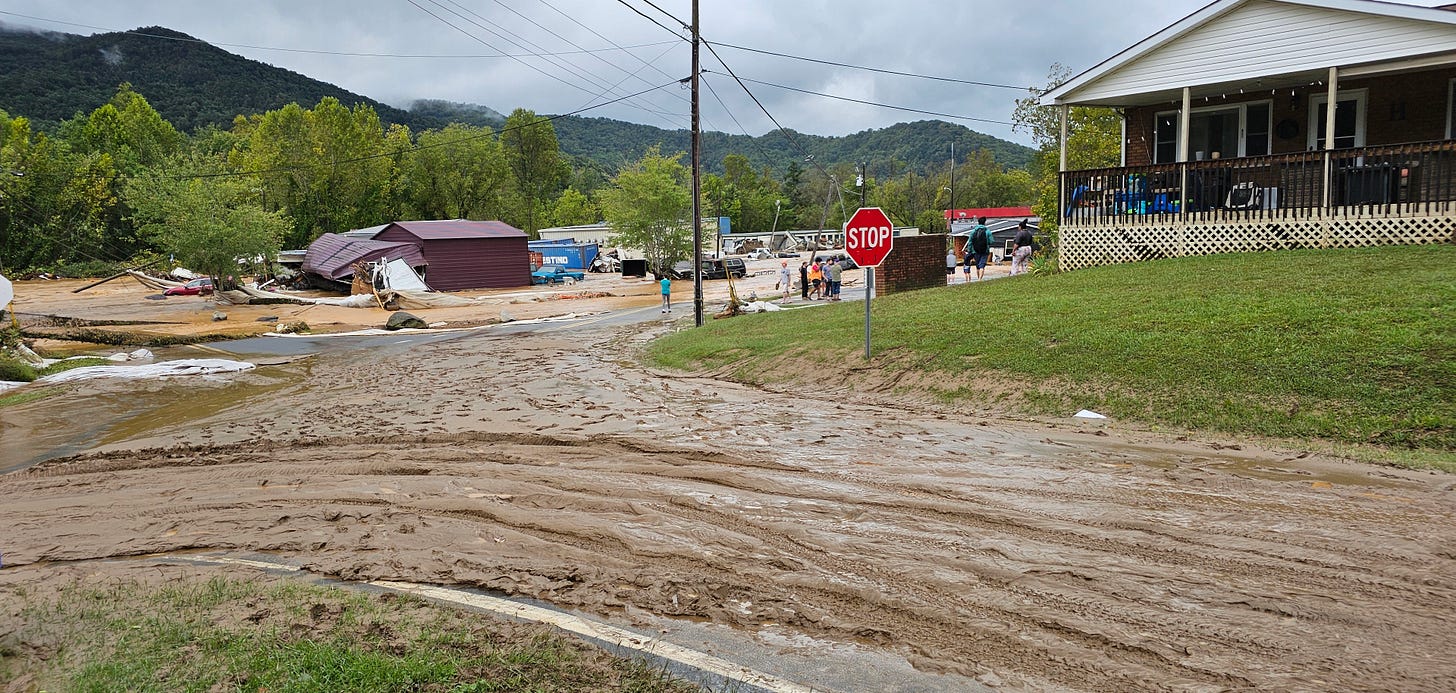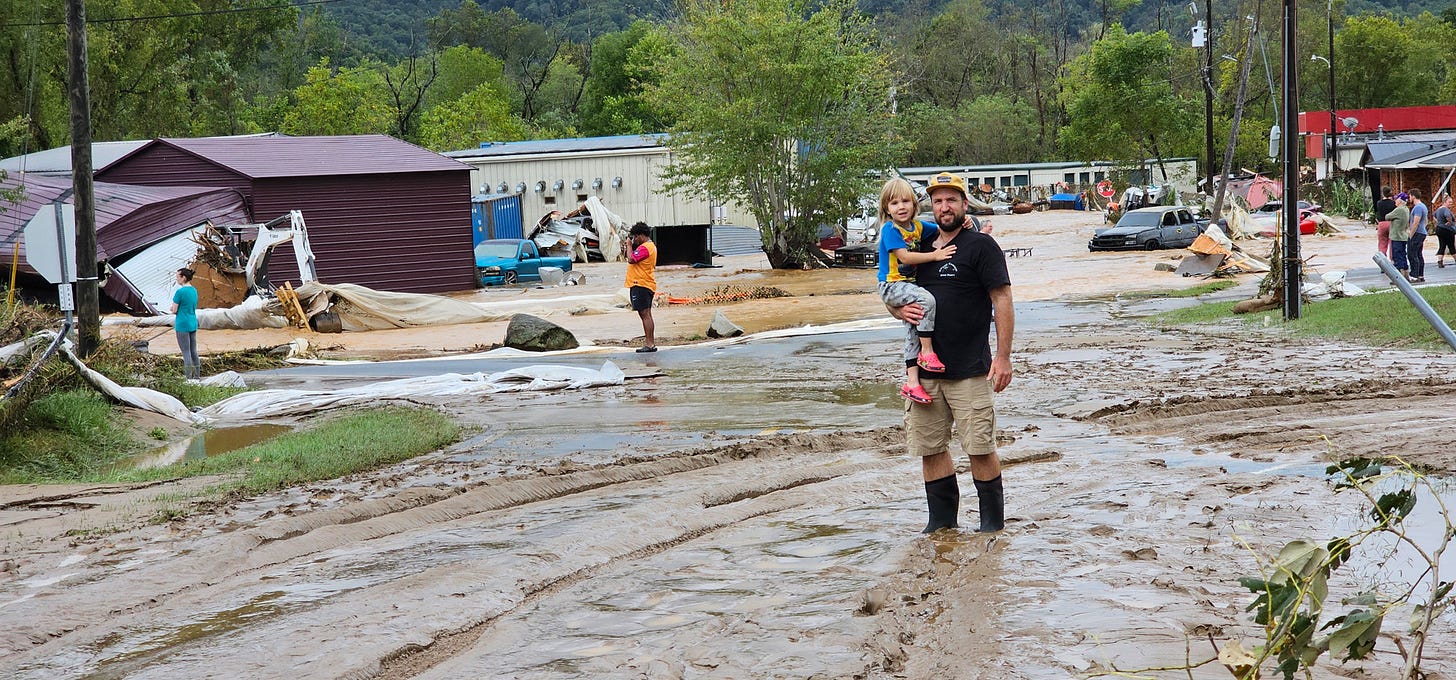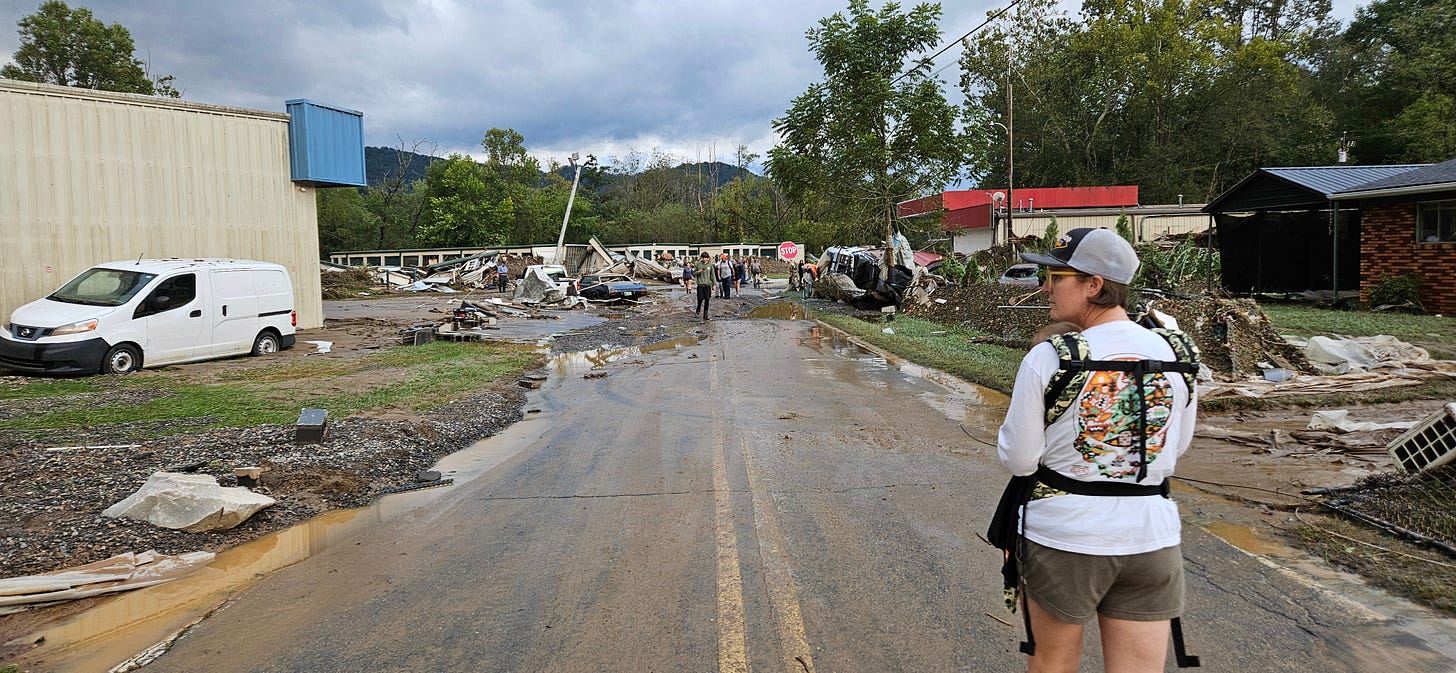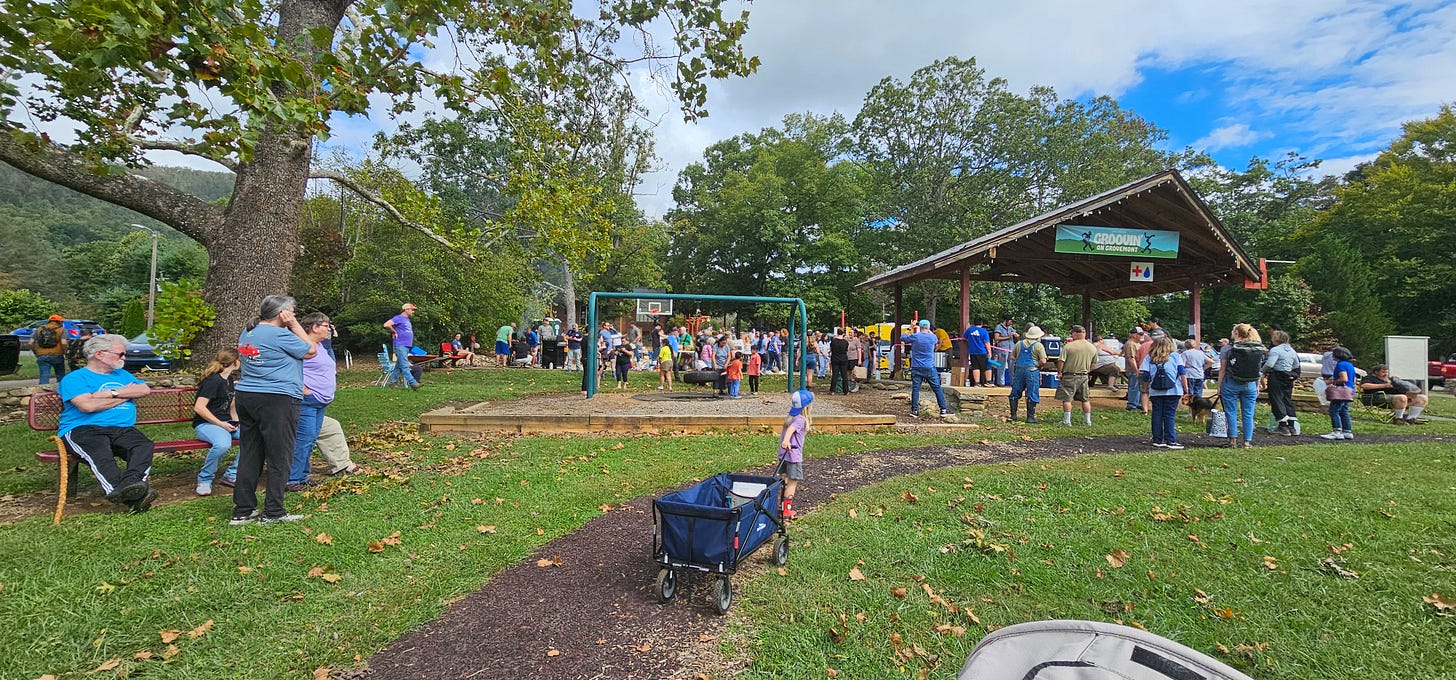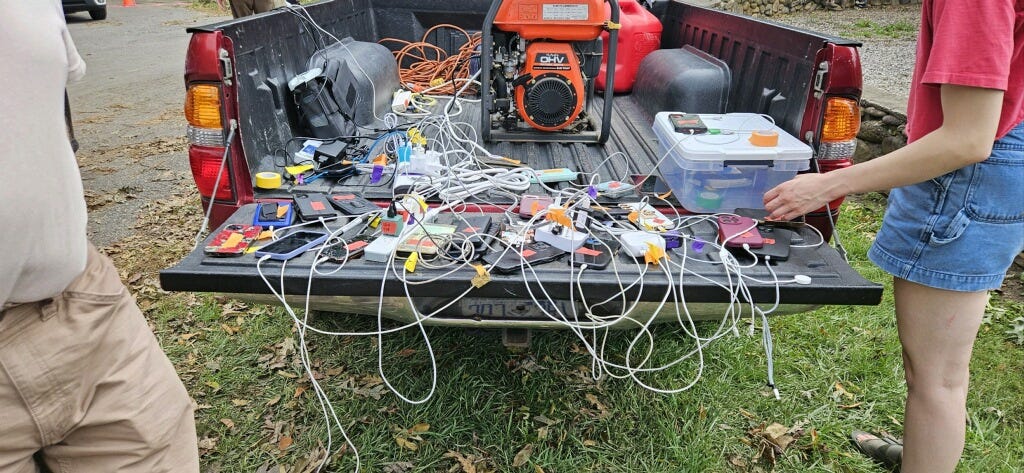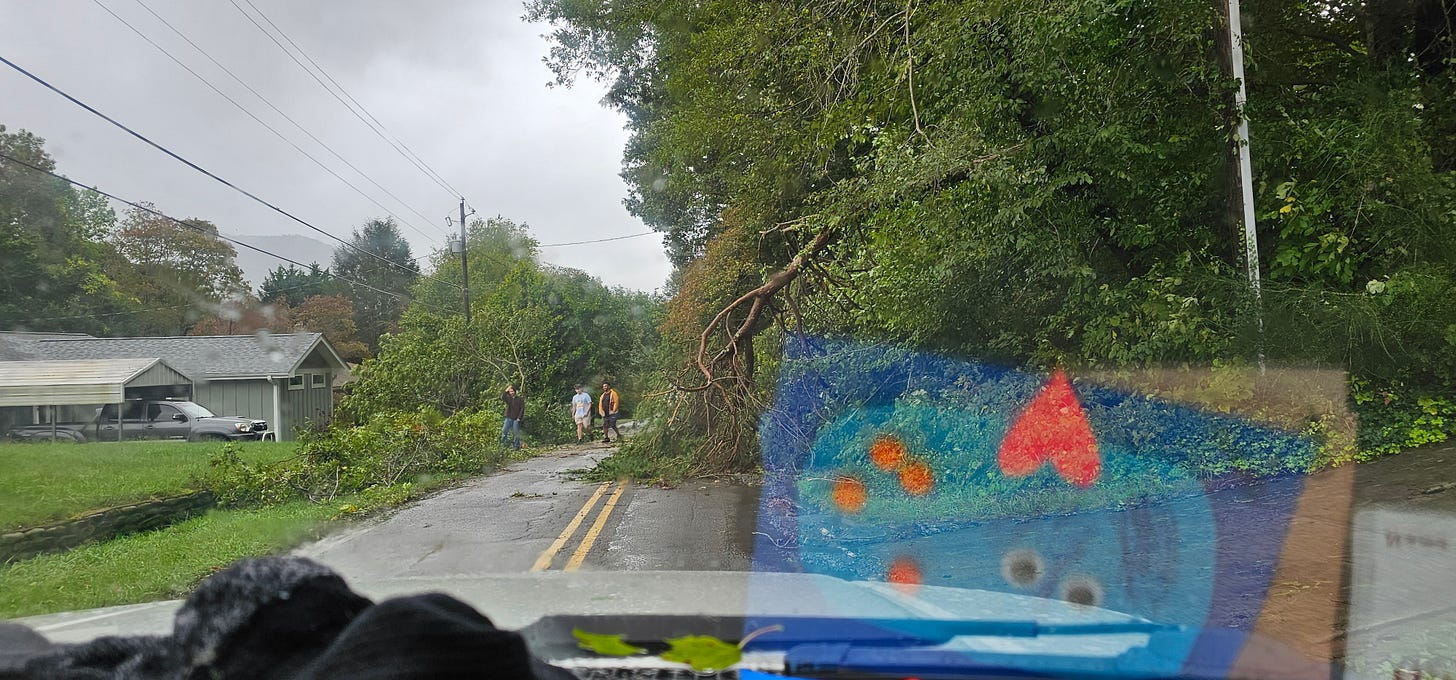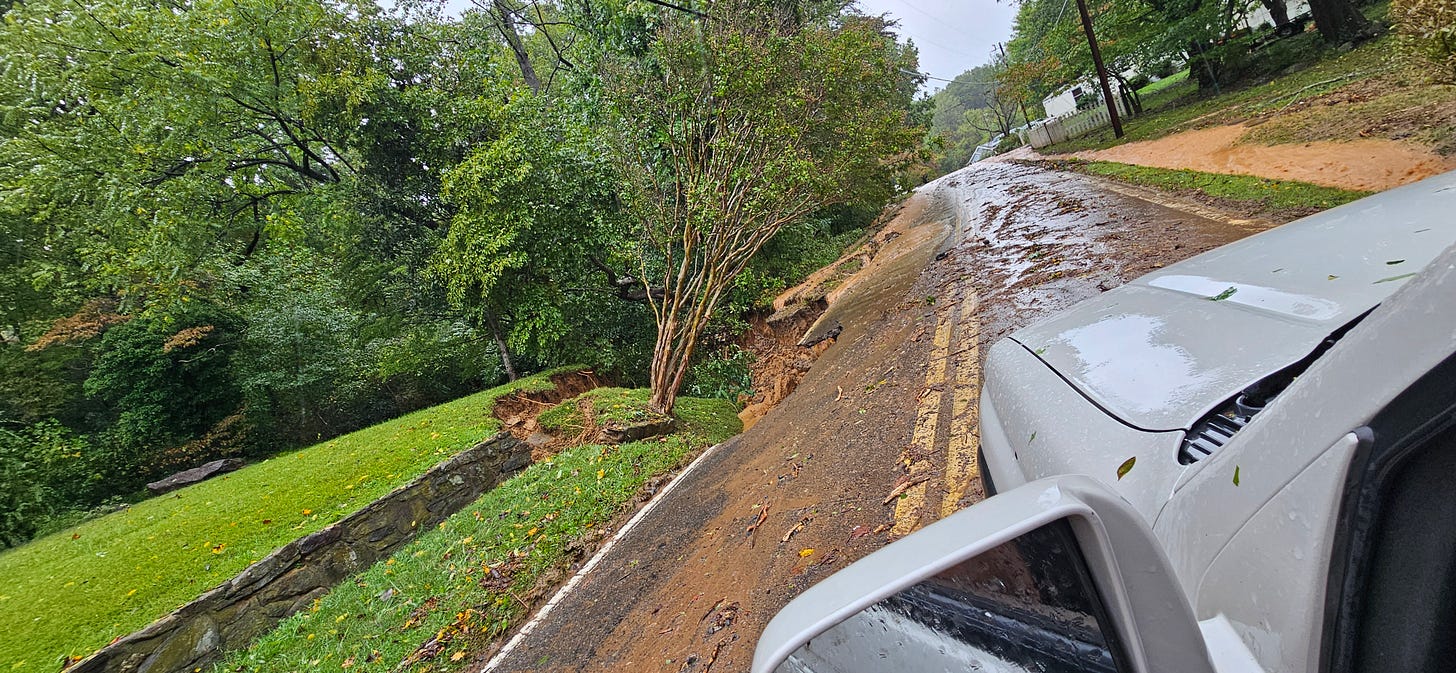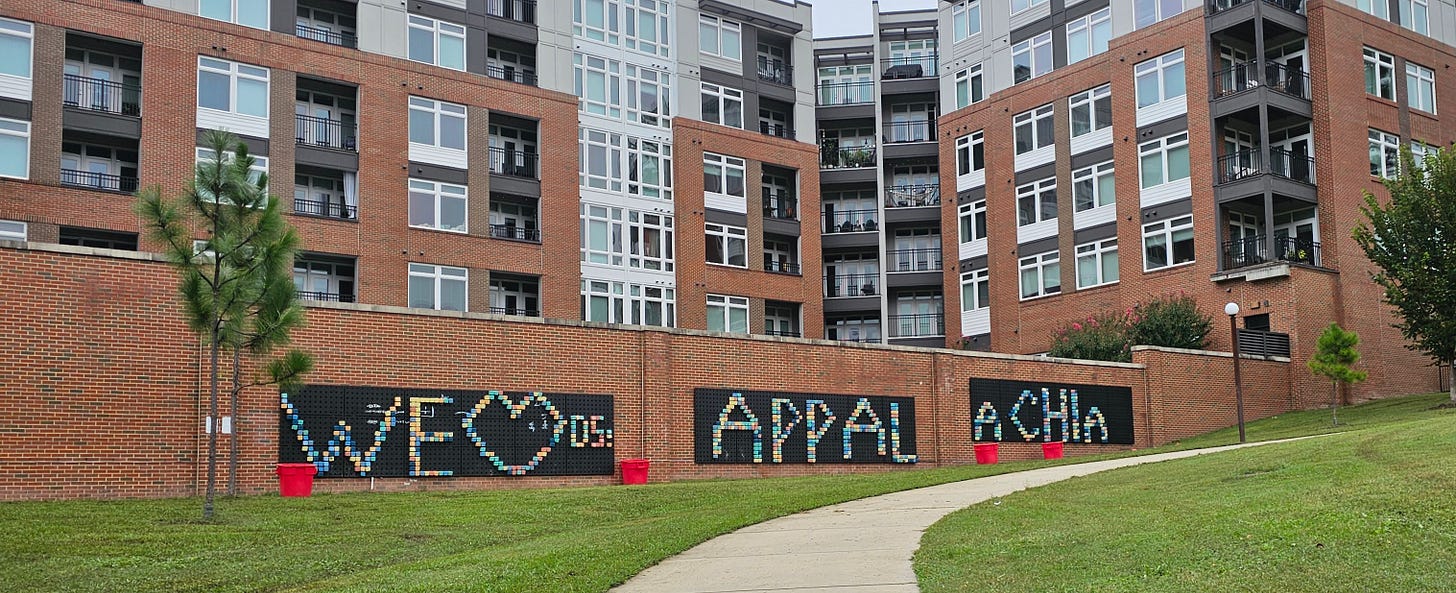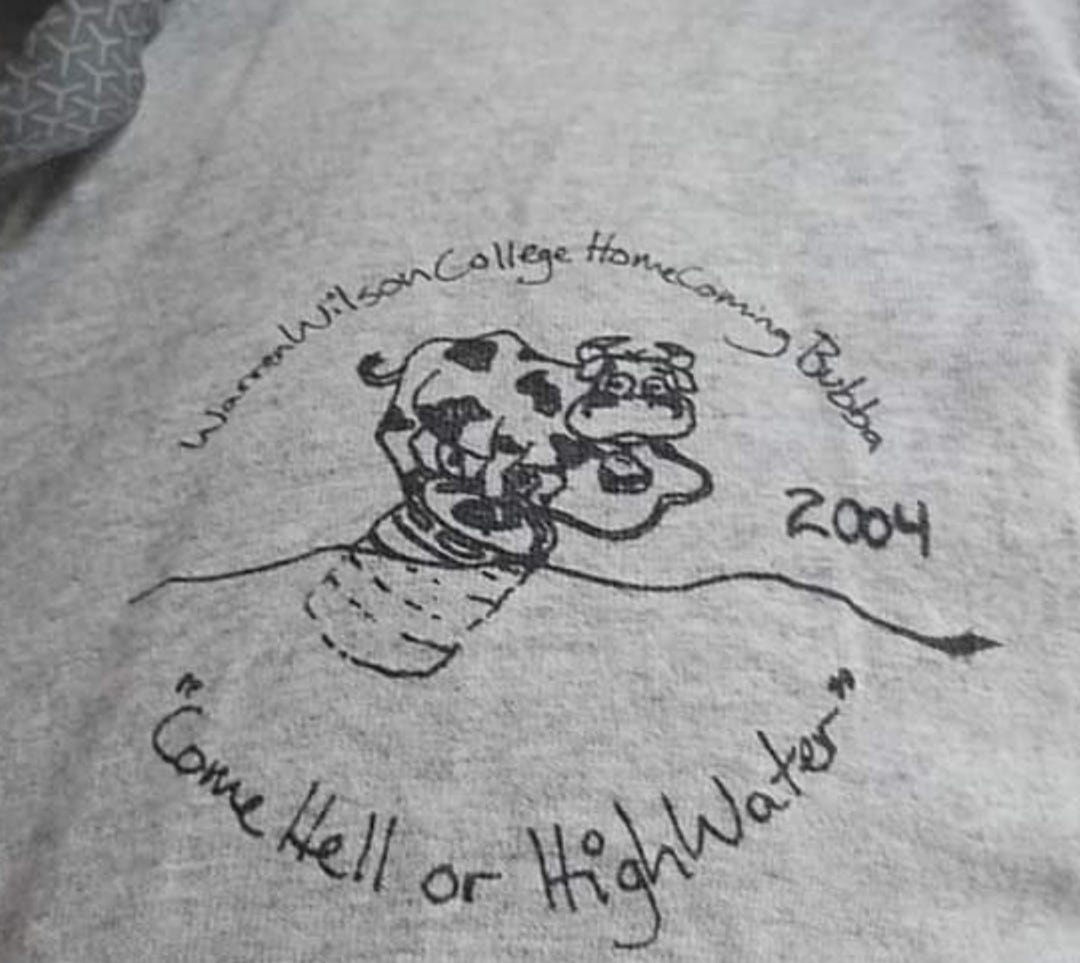In the Wake of Hurricane Helene, Conversations with Folks from Western North Carolina
"There's nothin' I can do to keep from cryin' when we call your name, Helene."
Jimmy — Asheville, North Carolina
Asheville has weathered storms in the past. According to Jimmy, the friendly city nestled the heart of North Carolina’s Blue Ridge Mountains at the confluence of the French Broad and Swannanoa rivers is typically known as a place of refuge during storms, offering relative high ground for residents of nearby coastal states. But Hurricane Helene was different.
“The river has crested Riverside Drive. We are officially stuck.”
8:32 am Friday, September 27th, 2024
Moments earlier, around eight in the morning last Friday, Jimmy woke up when a large tree fell through his backyard, taking out his roommate’s car. The sound of other trees falling in the neighborhood prompted one thought, It’s here.
“I’ve seen the river flood, and kinda crazy, but I’ve never seen it get to the road. This was the absolute worst. There was just so much water. It washed away entire towns.”
Jimmy was referencing the fate of nearby Chimney Rock, North Carolina. A small town about thirty miles southeast of Asheville that saw massive damage.
Energized by warming Gulf waters, Helene’s unusual inland reach carried a deluge of rain and extreme winds deep into Western North Carolina. Coupled with a drier and warmer summer, the river quickly swelled to three times its size and “raced through town” while homes clung to the steep slopes that grew increasingly susceptible to the threat of landslides.
“What sucks is all the uncertainty. Like what am I supposed to do?”
I spoke with Jimmy early Tuesday morning after finally securing enough gas to safely begin making his way south towards Atlanta — the only route out of town. Having heard anecdotal reports of gun violence in the wake of fuel shortages, I asked if he had any similar experiences.
“I didn't deal with it firsthand, but I felt the tension. I did hear somebody shot someone’s tire after cutting in line. You gotta be careful where you go though. I was hearing about people putting water in people’s cars and fucking them up.”
An avid fan of live music, “everyone’s favorite venue” Salvage Station was still underwater when Jimmy left. The emotional toll of the storm caught up with him when he noticed what had been an unusually prolonged silence driving through South Carolina.
“I haven’t even turned on the radio. There are still trees everywhere. We’re living through this right now.”
Meg — Swannanoa, North Carolina
Just ten miles east of Asheville, the past few days have been a whirlwind for Meg and her family. A student counselor at a local school and mother of two, Meg and her husband Chris used to live in Asheville but have called Swannanoa home for the better part of the last decade.
Their son Granger is soon to be four and they recently welcomed their daughter Gwen, just eight months old. Mid-construction on an addition as their young family grows, Meg and Chris were up in the early hours of Friday morning tracking the water as it started to seep into their basement.
“The drain just couldn’t keep up.”
Neighbors started reaching out around five a.m., updating one another on their status as winds started to pick. One neighbor, a young father who’s wife was out of town for work, was juggling solo dad duty as he could do little but watch his yard start to flood. With veterans and medical professionals among them, it was during these early morning hours that the neighborhood began to morph into a crisis response team, establishing check-ins in every fifteen to twenty minutes.
“There’s a fine line of overwhelm and wanting to help. But where do you start? It comes down to what’s directly in front you.”
The storm calmed by mid afternoon Friday, allowing the neighborhood to begin surveying the damage and take stock of priorities. The Swannanoa River had swelled well above Old US Highway 70 reaching Wilson Ave where Meg and Chris live.
Thanks to existing commmunity networks, Meg and her neighbors were able to begin the swift action of assessing the most pressing needs of the community and who was best equipped to provide what. It was here that folks began to get a sense of the loss of both property and life.
“Things got organized so fast.”
Early Saturday, community leaders from the Swannanoa Community Council (SCC), Friends and Neighbors of Swannanoa (FANS) and Friends of the Swannanoa Library (FOTSL) gathered nearby in Grovemont Park to begin coordinating relief efforts including teams for Chainsaw & Tree Removal, Medical Assistance, Welfare Checks and Supply Collection and Distribution.
With no water or power, food and hydration ranked high on the list of priorities. Community members brought grills to the park to help centralize food distribution and established an iodine sanitation station to get water to those in need. Eventually, the iodine ran out. Leaving them to begin using the proper bleach to water ratio for emergency water purification (1/8 tsp per gallon of water).
“People know, but they don’t know.”
As a young mother, a primary concern for Meg was staying hydrated in order to continue feeding Gwen. Fortunately, she had an ample supply of frozen breastmilk were she to need it, but that would mean opening the freezer and starting the clock towards spoiling. Thankfully it didn't come to that.
Friends from nearby Bee Tree had stopped by to access what faint cell service was available closer to town. After getting status updates out to friends and family out-of-state, they made the trek home carrying the seven one-gallon bags to be stored in their freezer running off a generator.
Come Monday morning, Meg and Chris were fortunate enough to have been offered shelter amongst friends in Durham, North Carolina. Packing up the family of four and their dog Otter, the drive that usually takes three hours was nearly twice as long.
Similar to Jimmy reaching Georgia, the emotional qualia of the crisis that had been welling up for days was eager to be released as stress levels recessed with distance and passing time. The next morning, walking to the Durham Food Hall in search of the comfort only a “fancy” coffee could offer after five days of camp coffee, that moment became increasingly unavoidable.
“What hits you and in what waves is wild. I don’t usually cry, but I’ve started a list of things that have made me cry. Mostly positive things, feelings of relief. Things I want to remember.”
With Gwen safely pressed to her chest, Meg could feel her eyes getting hot with the weight of the weekend. Despite everything they had managed over the previous days, suddenly the idea of carrying three drinks felt oddly unsurmountable. After bringing drinks out to Chris and Granger, she couldn't help but cry as she walked back to the counter for her Fall special Harvest Spice Latte.
“All these people are probably looking at our home. They have no idea. I don’t want to be here. I just want to be home in my valley.”
Although she was safer than she had been in days, Meg couldn't help but feel like she stood out. Whether or not she actually did is beside the point. She felt isolated and the eerie mundanity of a room engrossed in screens was enough to bring a flood of tears to the surface.
That it is precisely what the climate crisis does. It isolates us. As generational storms become more regular while growing increasingly fierce, even the strongest communities will become fractured as we are forced to grapple with the aftermath. Anyone who’s invested in their community, and felt the support of that community in turn, knows what is at stake when that is threatened.
As resilient as the Swannanoa community has proven themselves in the wake of Hurricane Helene, they will be sorting through this tragedy for months to come, if not years.
Living through history
Speaking with both Jimmy and Meg, comparisons of Hurricane Helene to North Carolina’s history of flooding came up. Comparisons I’ve heard echoed elsewhere, often coupled with an air of normalcy.
The ‘Great Flood of 1916’ was "the worst natural disaster in the recorded history of Western North Carolina." It wrecked havoc on Asheville, causing millions in damages and claimed over eighty lives. More recently, Meg’s husband Chris was a student at nearby Warren Wilson college in 2004 when the Swannanoa River flooded during Hurricane Frances. Navigating the rural campus by boat, Chris remembers doing his best with fellow students to save the school’s livestock.
This past weekend, just twenty years later, the Swannanoa River rose to 26.1 feet, exceeding its previous high water mark by over six feet.
Where do we go from here?
In the wake of Hurricane Helene, the devastation visited upon the community-rich region of American Appalachia offers a visceral glimpse of the raw reality the climate crisis has in store. Storms are growing more powerful and increasingly common.
It’s impossible to say with certainty, but the likelihood of another storm hitting the region in the next decade feels like a safer bet than not. However, one key difference from the past is the scope of our understanding today as to how and why these disasters are happening. Climate models have forecasted this reality for decades.
Terrifying as models can be, they are often abstract and fail to grok the emotional toll of watching a shipping container appear weightless as it floats through your local art district. And they certainly offer little to prepare us for when our neighbors are stuck in a tree, pleading for someone to cut through the debris of their house with a chainsaw to search of their wife.
But models are important. They allow us to extrapolate trends like rising temperatures in the Gulf of Mexico. Temperatures that are currently influencing storms like Hurricane Helene, despite sitting well below projections assuming we continue with business-as-usual. That is to say a world marked by an expanding fossil fuel industry fueling the illusory search for exponential economic growth.
One thing is for sure. As high as they rise, flood waters will do little to wash away the negligence of the past. But that is to say nothing of the choices we have yet to make. If there is anything to glean from the decisive action on display in communities across the American Southeast, it is this. In any crisis, decisions come down to the aperture of what’s directly in front you. We need only open our eyes to know we must chart a new course as fast as possible.
Support Relief Efforts
The residents of Western North Carolina are in urgent need of financial support. Federal disaster relief is woefully insufficient for reasons deserving of its own diatribe. That said, there has been resounding praise for a handful of local groups who’s response has been immediate and ongoing
Please consider donating if you are able:
Beloved Asheville
Cashapp: $BeLovedAsheville
Venmo: @BeLoved-Asheville
IG: @belovedasheville
Pansy Collective
Cashapp: $pansycollective
Venmo: @pansycollective
IG: @pansy.collective
Asheville Survival
Cashapp: $Streets1de
Venmo: @AppMedSolid
IG: @avlsurvival





